Futuro Houses: A Failed 1960s Attempt at UFO Living
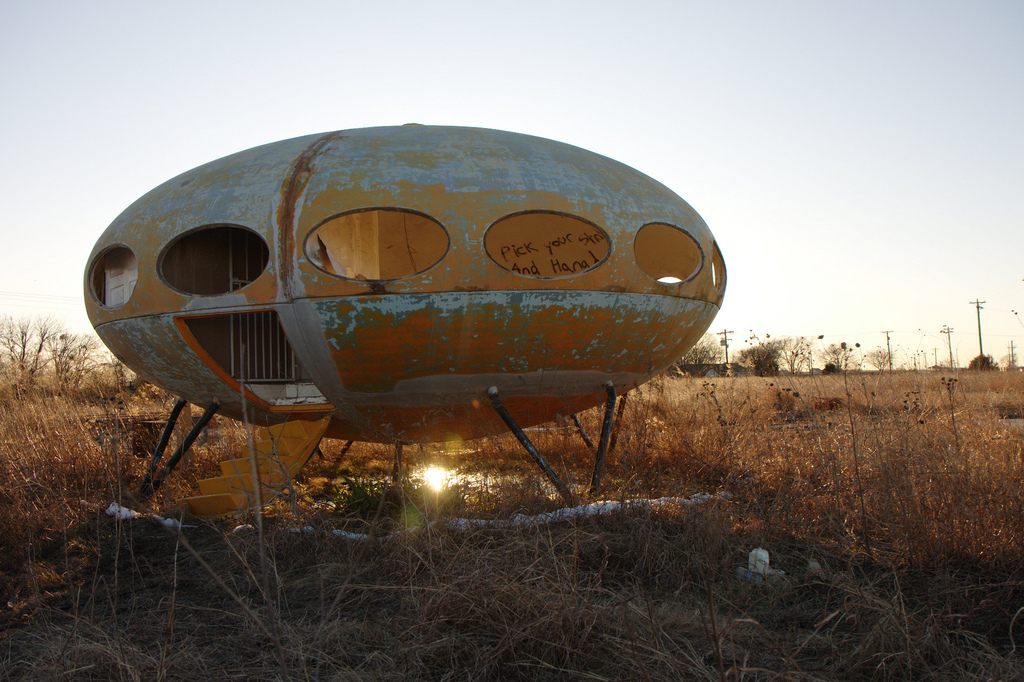 Abandoned Futuro House in Royse City, Texas (photograph by Steve Rainwater/Flickr)
Abandoned Futuro House in Royse City, Texas (photograph by Steve Rainwater/Flickr)
Last month an Atlas Obscura user submitted a curious building that appeared like a forgotten alien crash site. The UFO-shaped house in Royse City, Texas, sits alone in an overgrown field, a vision of some solitary failed retrofuture dream. Which is why when we shared it online, we were surprised when so many people responded with their UFO house sightings around the world.
The Futuro House was designed by Finnish architect Matti Suuronen in the late 1960s. Made of new materials like plastic and manufactured to be portable and adaptable to diverse terrain with its raised legs, the capsule house was imagined as a ski chalet with a quick heating system. You entered through a hatch to an elliptical space with a bedroom, bathroom, fireplace, and living room. Suuronen soon saw its potential beyond the slopes, and through the Futuro Corporation built the lightweight houses as a prefabricated, compact housing solution adaptable for any corner of the globe.
Due to its unusual space age-influenced design, and the oil crisis of 1973 that made plastic expensive, under 100 of the houses were made. Around 60 of those survive, and they’ve dispersed all over the globe like a covert invasion of extraterrestrials that got canceled decades ago. Some look new, such as one in gleaming yellow on top of the WeeGee exhibition center outside of Helsinki, or another recently restored as a study space at the University of Canberra in Australia. Others are anomalies in the urban landscape, including one in Tampa, Florida, that’s a strip club VIP room, while at Pink Elephant Antique Mall in Livingston, Illinois, a battered model mingles with other kitsch from the past like a Twistee Treat shack and a Muffler Man.
 The Futuro House in Pensacola Beach, Florida, which survived Hurricane Ivan (photograph by Ken Ratcliff/Flickr)
The Futuro House in Pensacola Beach, Florida, which survived Hurricane Ivan (photograph by Ken Ratcliff/Flickr)
The site TheFuturoHouse.com carefully maps the whereabouts of the world’s remaining Suuronen UFOs, from New Zealand to Greece. You can also cruise by them on Street View through Google Sightseeing’s round up of the saucers. And while you can’t buy one for $14,000 like when they were made, the houses do periodically turn up for sale — one appeared on eBay this May.
Matti Suuronen wasn’t the only architect to attempt UFO-style living — there were also the Sanjhih UFO houses in Taiwan built in 1978, unfortunately now demolished. But there is something enduringly endearing about the homes, and there’s definitely room now in our current housing situation for houses that can be quickly built in varying topography. It’s easy to imagine them touching down on top of New York City’s apartment buildings as additional living space, or braving the rugged landscape of Antarctica as research bases (there are in fact similar structures in use by the Australian Antarctica Division).
Through December 14, you can visit a freshly restored 1972 Futuro House adopted by artist Craig Barnes on top of Matt’s Gallery in London. But to really go back in time, check out the 1971 footage below from when the Futuro House was a brand new vision for futuristic living.

Örebro, Sweden (photograph by Sebastian F of Sw. Wiki/Wikimedia)

Warrington, New Zealand (photograph by Peter Dowden/Wikimedia)
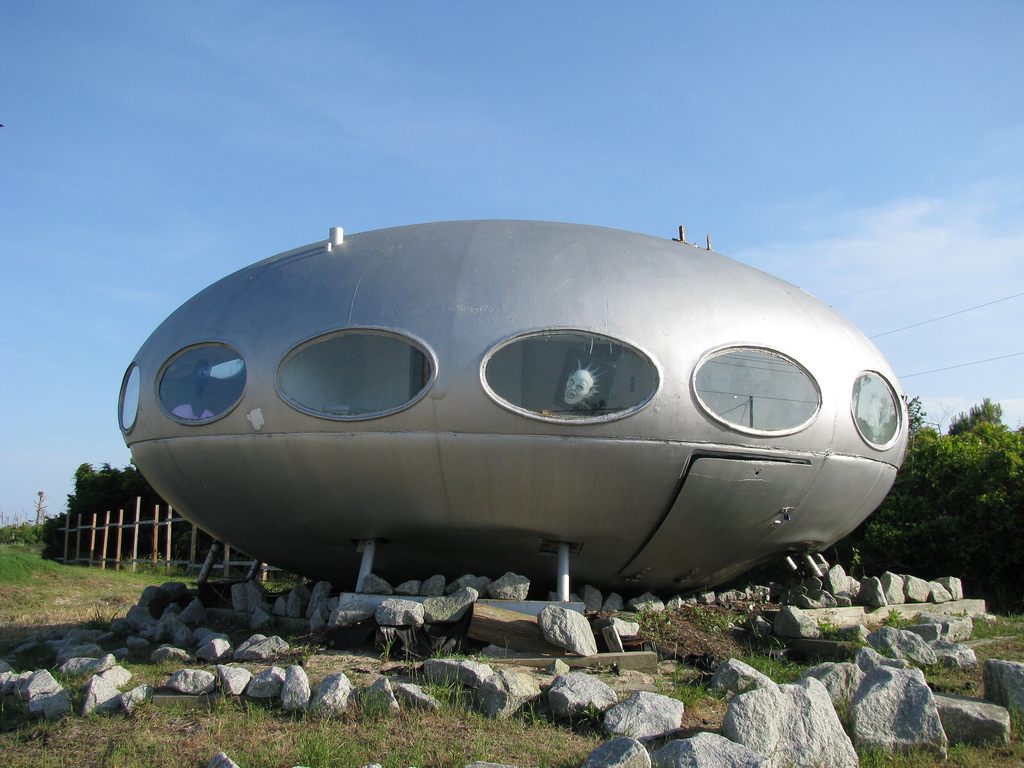
Outerbanks, North Carolina (photograph by Elizabeth/Flickr)
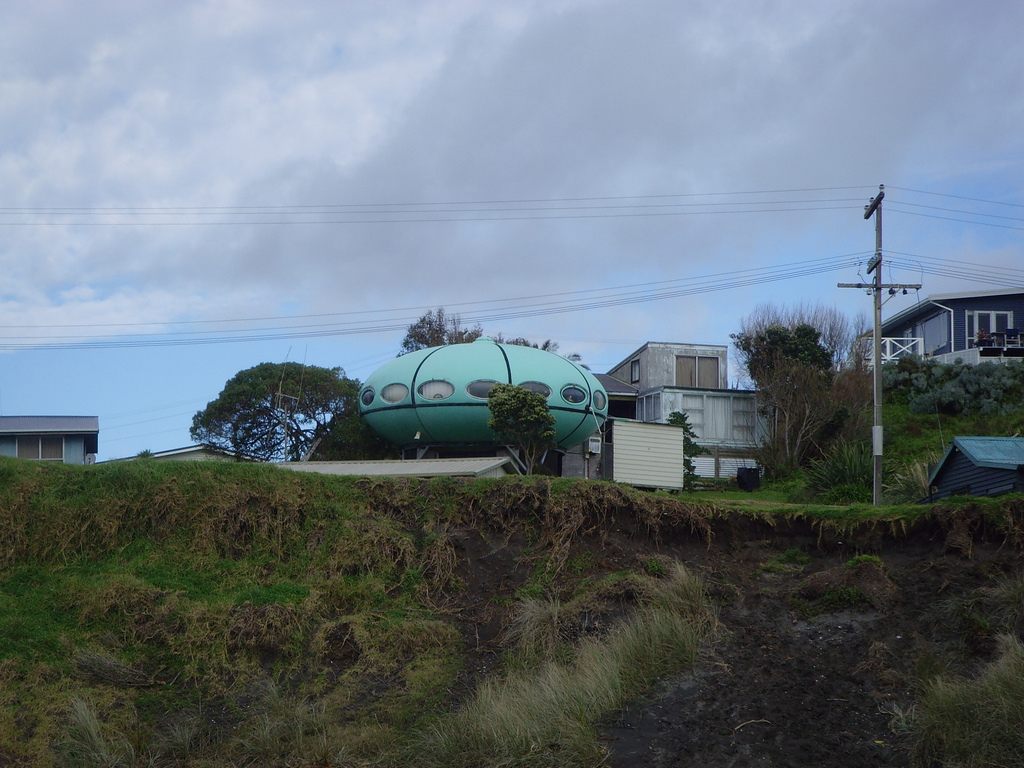
New Zealand (photograph by Adam Fletcher/Flickr)
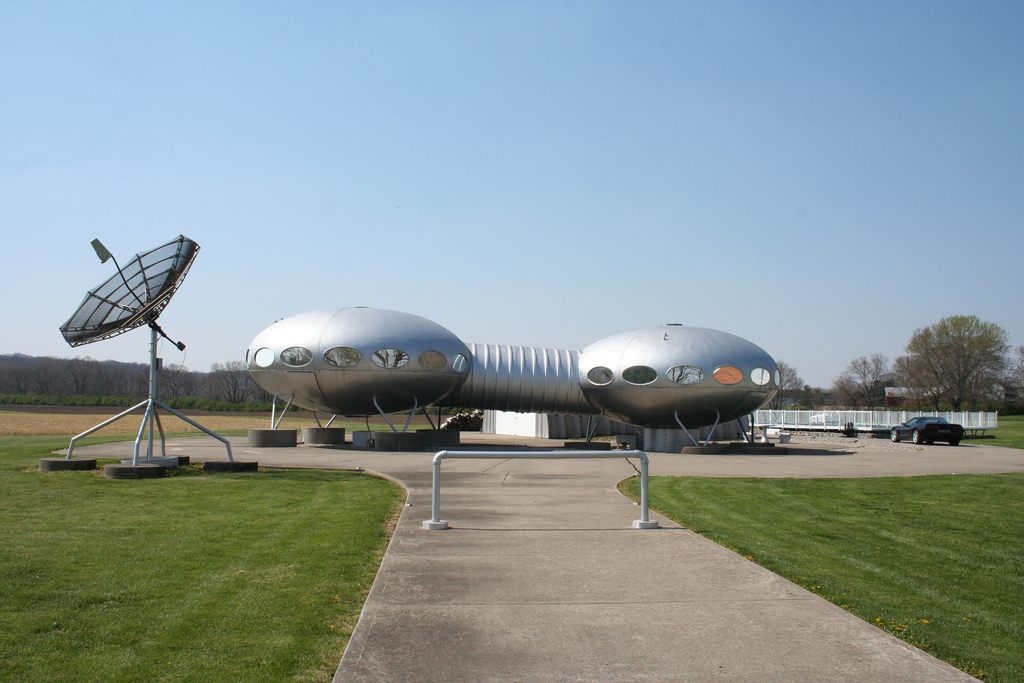
Conjoined Futuro Houses in Germantown, Ohio (photograph by Rob Lambert/Flickr)
 Berlin, Germany (photograph by Georg Slickers/Wikimedia)
Berlin, Germany (photograph by Georg Slickers/Wikimedia)


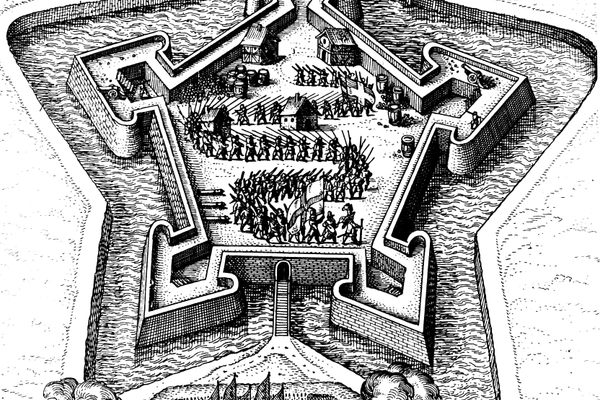
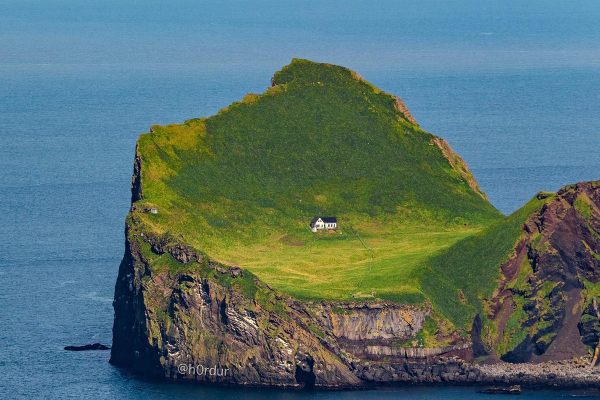















Follow us on Twitter to get the latest on the world's hidden wonders.
Like us on Facebook to get the latest on the world's hidden wonders.
Follow us on Twitter Like us on Facebook